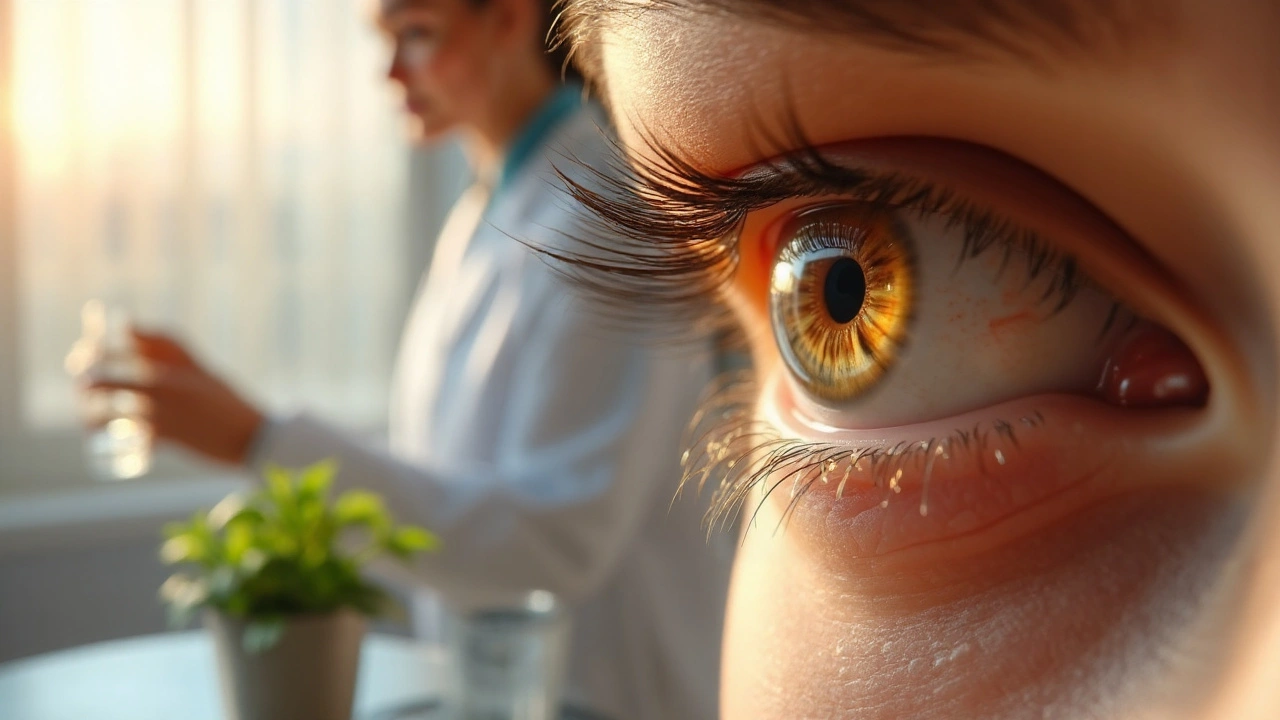Glaucoma Treatment: What Works and How to Manage It
Glaucoma is the sneaky eye disease that steals sight slowly, often without any warning. The good news? We have several ways to slow or stop the damage. Below you’ll find the most common treatments, quick advice on using them, and simple habits that can help keep eye pressure in check.
Medications that Lower Eye Pressure
Eye drops are the first line of defense for most people. They work by either reducing the fluid your eye makes or helping it drain better. The main classes are prostaglandin analogs (like latanoprost), beta‑blockers (timolol), carbonic anhydrase inhibitors (brinzolamide), and alpha agonists (brimonidine). Most patients start with a single drop and add more if the pressure stays high.
Take your drops exactly as your doctor says – usually once in the morning and once at night. Missing doses can let pressure rise again, undoing weeks of progress. If you’re having trouble remembering, set a phone alarm or keep the bottle beside your toothbrush.
Side effects vary. Some drops may cause redness, a bitter taste, or a faint eyelash growth. If anything feels off, call your eye doctor; they can switch you to a gentler formula.
Procedures and Lifestyle Hacks
When drops aren’t enough, doctors turn to laser or surgical options. Laser trabeculoplasty uses a quick pulse to improve fluid outflow. It’s done in the office, takes a few minutes, and often reduces the need for multiple drops.
More invasive surgeries, like trabeculectomy or tube shunts, create a new drainage route. These are usually reserved for advanced cases, but they can bring pressure down dramatically and preserve vision for years.
Besides medical care, a few lifestyle tweaks can help. Regular aerobic exercise (like brisk walking) can lower eye pressure modestly. Aim for 30 minutes most days. Limit caffeine – a big cup of coffee can spike pressure for a short time.
Protect your eyes from injury. Wear safety glasses when doing yard work or sports, and use sunglasses that block UV rays. UV exposure can worsen certain types of glaucoma.
Stay on top of your check‑ups. Even if your vision feels fine, an eye pressure test every 3–6 months catches changes early. Bring a list of all meds, including over‑the‑counter eye drops, to each visit.
Lastly, talk to your doctor about your overall health. High blood pressure, diabetes, and sleep apnea can all affect eye pressure. Managing these conditions often makes glaucoma treatment more effective.
Glaucoma may be a lifelong condition, but with the right drops, occasional procedures, and a few healthy habits, you can keep it from stealing your sight. Keep the conversation open with your eye doctor, stick to your drop schedule, and make those simple lifestyle changes – your eyes will thank you.
Dorzolamide‑Timolol and Natural Strategies for Managing Glaucoma
Explore how Dorzolamide‑Timolol works, its role alongside natural methods, and practical steps to keep intraocular pressure under control.
